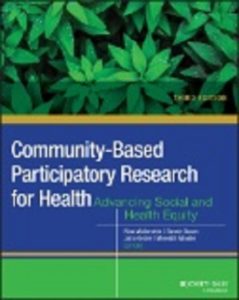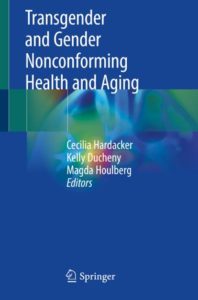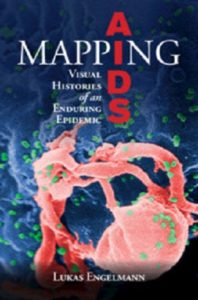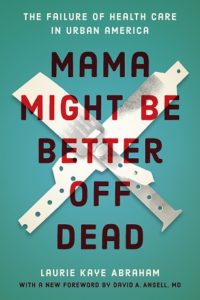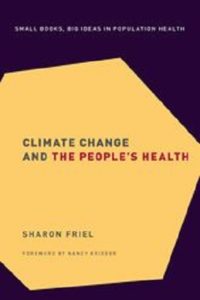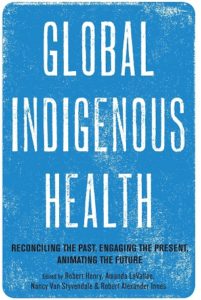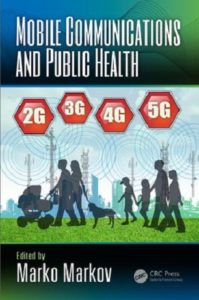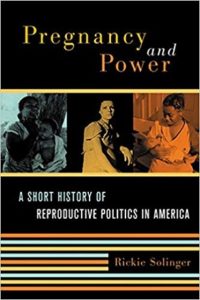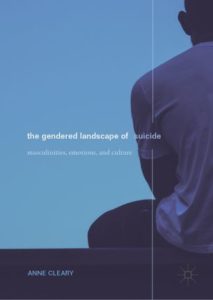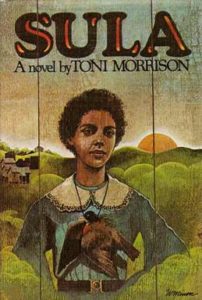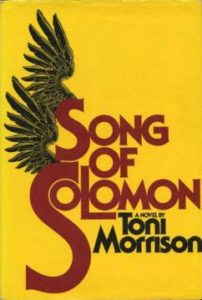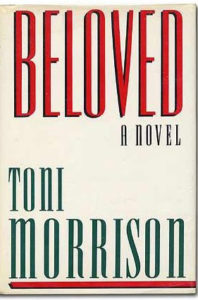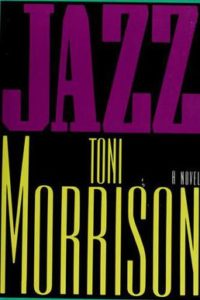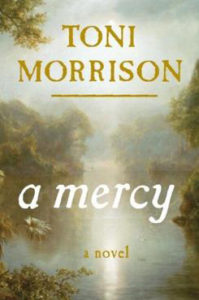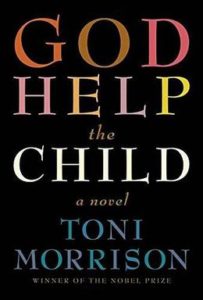Author: UC Berkeley Library
Never Forget? UC Berkeley’s Oral History Center documents memories of the Holocaust for researchers and the public
“It’s too late now because there’s nobody I can ask.”
— Katalin Pecsi, child of Auschwitz survivor
The 75th anniversary of the liberation of Auschwitz is on January 27 of this year and 41% of Americans don’t know what Auschwitz is — including a whopping two-thirds of millennials. A recent survey found a stunning lack of basic knowledge in the United States about the Holocaust — defined by the US Holocaust museum as “the systematic, state-sponsored persecution and murder of six million Jews” that decimated the Jewish population in Europe. Almost one million Jews were killed in Auschwitz alone, the largest and most infamous of the death camps. With fewer and fewer Jews who experienced the Holocaust first-hand alive to tell their stories — the youngest survivors with memories of the camps are in their eighties and nineties today — the cry of Holocaust remembrance not to forget depends on a clear historical record.
Throughout the Oral History Center’s vast collection of interviews are more than 200 that reference the Holocaust. While there is no specific Oral History Center (OHC) project dedicated to documenting the Holocaust, interviews can be found within projects about food and wine, arts and letters, industry and labor, philanthropy, and more. Furthermore, our oral history collections about the history of UC Berkeley include memories of the Holocaust and its impact, including projects about the Free Speech Movement, the student political party SLATE, and faculty interviews. These oral histories document memories of the Holocaust from a multiplicity of perspectives, from the first-hand experiences of Jewish refugees who fled from Europe before it was too late, to Americans who first heard about the atrocities after the liberation of the camps. The Jewish narrators in particular talk about how the Holocaust was the driving factor in their careers, philanthropy, Israel advocacy, and political activism. These oral histories may be particularly interesting to scholars as they provide a different lens for looking at the Holocaust, capturing the histories of those who were being interviewed for other reasons, but nonetheless spoke about the impact of the Holocaust on their lives.
There are oral histories in the collection that preserve the experiences of Jewish refugees who managed to flee Europe before it was too late and build new lives for themselves in the United States. Alfred Fromm fled Germany for the US in 1936 and went on to build a successful wine distribution business; he became a philanthropist supporting numerous educational, cultural, and Jewish organizations, including UC Berkeley’s Magnes Museum. In 1939, violinist Sandor Salgo had a sponsor in the United States but was denied a visa from the US consul in Hungary, who said the Hungarian quota was filled until 1984. In tears, Salgo told a patroness that he would probably die in a concentration camp and she was able to intervene on his behalf; his brother died in Auschwitz. Berkeley Mechanical Engineering professor and dean George Leitmann escaped Nazi-occupied Austria in 1940 at the age of 15, a few years later to return to Europe during WWII as a US Army combat engineer. He was in the second wave of soldiers who liberated Landsberg Concentration Camp, and later served as a translator during the Nuremberg War Crime Trials. All these experiences influenced his scientific area of study in control theory — measuring risk, probability, and how to avoid catastrophe.
“We certainly got there in time to see the smoldering bodies they were trying to burn and the skeletons. That probably hit me more than it hit the rest of the guys, because here my father was still missing. I still had hopes to see him among the DPs [displaced persons].” — George Leitmann on the liberation of Landsberg concentration camp. His father did not survive.
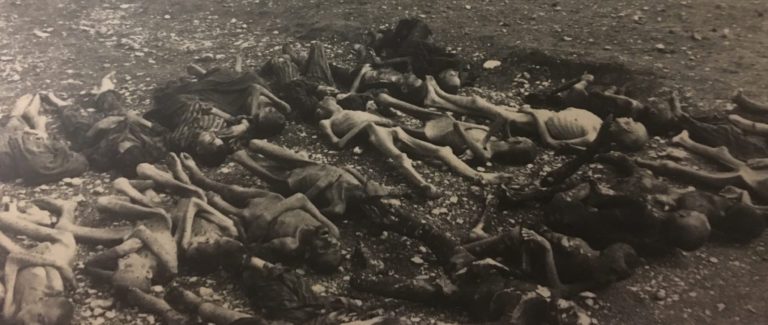
The one collection of interviews that addresses the Holocaust in the most detail is that of the the San Francisco Jewish Community Federation Leadership. Here can be found the oral history of William Lowenberg, a Holocaust survivor, number 145382 of the Auschwitz-Birkenau killing complex. His interview details how as a teenager luck, good health, and his own survival strategies enabled him to survive his harrowing journey through extermination camps, the Warsaw Ghetto aftermath, and a death march, until he was liberated from Dachau concentration camp at the age of 18. After an attempt to go home (like so many, his house had been taken over), Lowenberg eventually settled in San Francisco, where the Jewish Family Services Agency helped him secure a job collecting rent for a realty company. He went on to become a major figure in industrial real estate in the city. Lowenberg gave back to the agency later, serving on the same committee that helped him, in the 1970s finding jobs for Jewish refugees from the Soviet Union. Of his life dedicated to philanthropic and political activism on behalf of the Jewish community and Israel, Lowenberg reflected, “I feel that Jewish survival depends on the Jews.”
“I was young, healthy, and I kept clean. I kept as clean as I could all of the time.” — William Lowenberg on his survival strategies
The OHC collection also includes interviews of those who were present for the liberation, like Berkeley History Professor Emeritus Richard Herr, who was serving in the Signal Intelligence Corps and visited Buchenwald shortly after the liberation. He describes the displaced persons wandering the streets, survivors in their striped pajamas, the pile of dead bodies. “I was told they’d died after the liberation. They’d just been in such poor shape. They were just skin and bones. It was terrible.”
The collection also includes interviews of those who didn’t directly experience the Holocaust, but heard about it through family, friends, teachers, even work acquaintances. Oral histories are unique in that they can include off-hand comments and asides that illuminate an era. Six million — two thirds of Europe’s Jews perished — but three million survived and many dispersed to other countries including the United States. Narrators would encounter these survivors, the tales of depravity would sear in their memories, and the narrators would sometimes make offhand remarks. Other narrators provide more details about the many facets of the Holocaust — resistance and the underground, escapes, refugees and displaced persons, concentration camps, the murder of entire families — such as the oral histories of Laurette Goldberg, who taught music at UC Berkeley; Berkeley MBA Ronald Kaufman; wine writer Mike Weiss; winery manager Morris Katz; economist Lester Telser; poet Carl Rakosi, and Berkeley student activist Daniel Goldstine.

Among these are the oral histories of children of Holocaust survivors, including Berkeley History Professor Emerita Paula Fass, Paula Kornell, and Katalin Pecsi. All of them attributed their careers to their parents’ experiences. Growing up in Hungary, Katalin Pecsi knew her father had survived Auschwitz, her uncle Buchenwald, and her paternal grandmother Dachau; but had been told they were political prisoners because of their affiliation with the Communist Party. She later learned that she was Jewish, that her mother’s entire family had been killed in the Holocaust, and began to question what she had been told. “When I was a child I was told that they were political prisoners because they never told me that we were Jewish… but I’m not sure that’s true that they arrived as political prisoners. I don’t know, it’s too late now because there’s nobody I can ask.” Learning about her Jewish heritage combined with her longing to know about her own family propelled Pecsi into a career in Holocaust remembrance, becoming the director of education at the Budapest Holocaust Memorial Center.
“My parents were both survivors of the concentration camps. They had lost families. Not just their parents and siblings, but in fact, husbands, wives and children. They were married to other people, and my mother had a son who was taken from her when he was three. My father had four children who were all taken away and died in Auschwitz. One of the things that’s very, very clear is that I became a historian because of it. I became a historian because history was always around.” — Berkeley Professor Paula Fass
“What the concentration camp [Dachau] instilled in my father was just the beauty of life, and I think he helped to instill…was the beauty of a vineyard or of a vine growing, or beauty of your garden or the beauty of winemaking.” — Paula Kornell, winemaker
The OHC collection includes numerous oral histories that touch on narrators’ reactions to learning about the Holocaust. Interviewers for the Rosie the Riveter World War II Homefront Collection, for example, frequently asked narrators, who came from many walks of life, when did they first learn about the Holocaust and what was their reaction. Like Beatrice Rudney and Bud Figueroa, narrators interviewed for the Rosie the Riveter collection generally responded that they learned about the horrors of the genocide after the war, sometimes mentioning newsreels (films of piles of naked corpses, survivors of skin and bones). Other narrators, sitting for longer life-history interviews, addressed this issue when talking about their childhoods. Oral histories of Jewish narrators reveal more knowledge about what was happening during the war itself, particularly those whose families housed refugees, or who received letters from family with news of mass killings — 13 family members gone — or whose letters from family in Europe just stopped one day, such as former Dean of Berkeley Law School Jesse Choper, Professor Emeritus of Biochemistry and Molecular Biology Howard Schachman, Laurette Goldberg, Lester Telser, as well as Quaker activist Gerda Isenberg. Schachman observed, “I was certainly aware of what was going on to the Jews in Europe…. I doubted those people who claimed they weren’t aware of the Holocaust — it wasn’t called the Holocaust then.”
“I understood it during the war. There were always leaks of information of what was happening. Some people would escape from the concentration camps and come back and tell it.” — Jesse Choper, Dean Emeritus of Berkeley Law
The oral histories provide researchers with information about the range of feelings people had when they learned about the atrocities in the camps. Many of these are short responses to a direct question, such as in the Rosie the Riveter collection. Daniel Levin recalled a “sickening feeling;” DeMaurice Moses described being “inured to savagery by that time;” and as David Dibble remembered it, “You have to sort of genuflect and say, true, it was the worst thing that ever happened. And it was.” Some narrators recalled how other people talked about the Holocaust, and these interactions were indelible moments for them. Berkeley alumna and student activist Susan Griffin recalled an incident about four years after the war where her fellow Girl Scout Brownie troop members were laughing, saying Heil Hitler, and making the Nazi salute. She recalled the driver pulled over, emotional, and scolded that they must never do so again; and her grandparents, whom she described as “passive anti-Semites,” explained to the six-year-old “what an evil man Hitler was.” Berkeley History Professor Emeritus Larry Levine recalled being “shocked” when he was an undergraduate five years after the war ended, and an English professor told the class, “Don’t let the Jews tell you they are the only ones who have suffered.”
Some of the oral histories provide a glimpse into how the Holocaust affected Jewish Americans in the Baby Boom generation, living in its shadow. Berkeley alumna and student activist Julianne Morris, Adrienne Asch, and Wayne Feinstein recall how the Holocaust was something they always knew about, part of the culture. As Feinstein put it, “The first twenty or thirty years after the Second World War I think the Jewish community was in shock. And I grew up in that environment.” He described the Holocaust as “the primary motivation” for his lifelong dedication to Jewish education, cultural programs, and support for Israel.
“You couldn’t be a Jew in post-Holocaust America without knowing about the Holocaust. I mean, you grew up, you knew about the Holocaust, you knew about Israel.” — Adrienne Asch, disability rights activist and professor of bioethics
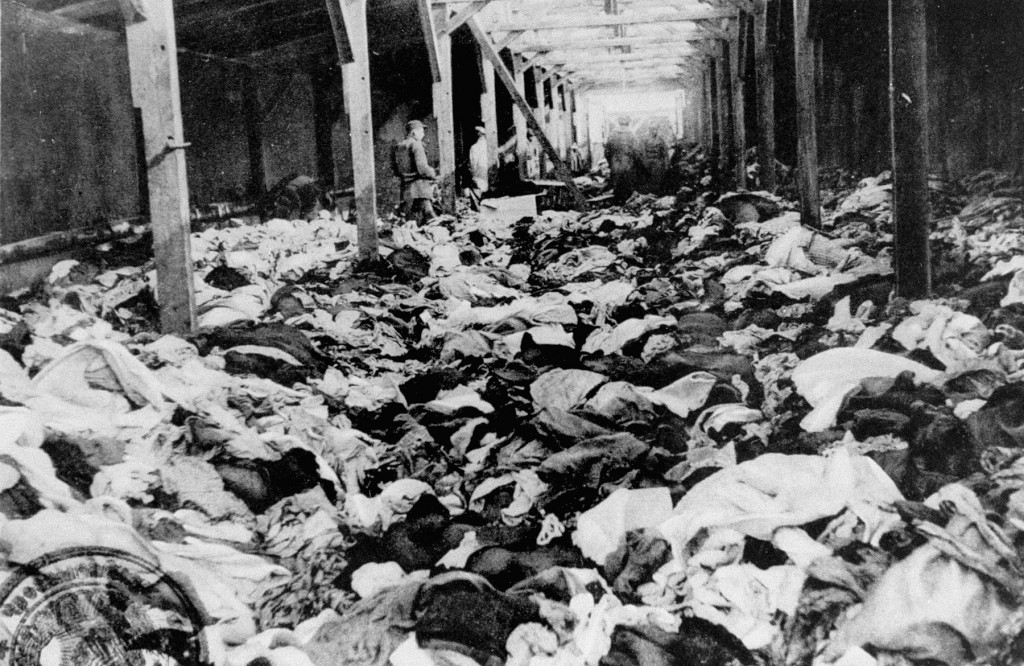
Finally, at least a few oral histories describe how narrators reacted upon visiting death camps as tourists years, even decades, after the end of the war. Through visiting these camps in person, these narrators came face to face with the scope of the horrors. Berkeley Economics Professor Emeritus and past director of the Institute of Industrial Relations, Lloyd Ulman, along with Marty Morgenstern, past director of Berkeley’s Center for Labor Research and Education, were taken to Auschwitz on a work trip to Poland. Ulman recalls how Morgenstern went outside and “put his head between his legs. He thought he was going to throw up or faint.” Ulman recalls “terrible things like seeing a whole collection of false teeth” [taken from the dead for their gold fillings] and feeling the “horror” that General Eisenhower had felt upon seeing the camps. Annette Dobbs also lived through the war but the enormity of the Holocaust really hit her when she visited Mauthausen Concentration Camp outside of Vienna in 1971. Expressing the sentiment of many of the narrators who spoke about the Holocaust, she said, “That day I made my own personal commitment to spend the rest of my life to see that nothing like that would ever happen to my people again.”
January 27, the date of the liberation of Auschwitz, is International Holocaust Remembrance Day.
Find these and all our oral histories from the search feature on our home page. You can search by name, key word, and several other criteria.
It takes a village to answer a reference question
Answering reference questions is the bread and butter of what many of us do as librarians. But rarely do we in the Social Sciences Division get the kinds of questions that Emilio Estevez portrayed in his 2018 film The Public. *
In fact, we believe that there are no “dumb” questions and will gladly help our patrons with any of their information needs. More often than not, our patrons have deep and complex research needs that challenge our expertise (and make our jobs fun) and require the collective knowledge and experience of our colleagues.
Take, for example, this query that came in:
“What is the cost of the social safety net in the US?”
To effectively answer this query we engaged in a dialogue with the researcher (what’s known as the “reference interview” in library-speak). In a case like this we want to: determine what kind of data they are hoping to find; determine specific geographic and time constraints; and clarify what, exactly, they mean by social safety net. Are they talking about public/government spending? What about private and philanthropic spending on the social safety net? Do they mean support for low-income people specifically, or all of society?
Jim Church, Librarian for Economics, Political Economy, and International Government Information, suggested OECD Stats which contains statistics by country from the multinational Organisation for Economic Co-operation and Development. OECD Stats has a section for Social Protection and Well Being including, among other things, pensions, sick leave, disability, unemployment, housing assistance, etc. Users can go to Social Expenditure – Detailed Data: United States.
Susan Edwards, Social Welfare Librarian and Head of the Social Sciences Division, suggested that for US data on the federal side, the Green Book provides statistical data of the major entitlement programs (Social Security, Medicare, Temporary Assistance for Needy Families, etc.) overseen by the Committee on Ways and Means. If, however, the researcher is looking into private and philanthropic spending on the social safety net, they can consult GuideStar and the Foundation Directory which provide information about the budgets of a wide range of nonprofit organizations and public charities.
Ann Glusker, Sociology, Demography, & Quantitative Research Librarian, suggested that the researcher remember to consider “grey literature”, which may not appear in peer-reviewed journals or formal publications, but which comes from reputable and reliable sources and which can add a lot to the published literature. In this case, the researcher may want to consult offerings and also staff in Berkeley’s Center for Comparative Family Welfare and Poverty Research, or Stanford’s Center on Poverty & Inequality, which has a page devoted to Safety Net Use.
Monica Singh, Business Librarian, suggested the researcher look at a couple of very helpful guides created by Jesse Silva, Scholarly Resources Strategy and Federal Government Information Librarian; Getting Started with the US Census has a tab on Social/Economic Census Sources.
A happy ending? We never saw the end result of the person’s research. We often send researchers on their way and don’t know how they use the information we’ve provided. But, considering we receive many return visits we must be doing something right.
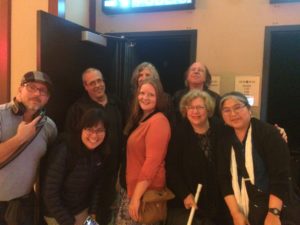
* Note: members of the Social Sciences Division went on a field trip to see The Public when it was playing in the theaters. While we gave Emilio Estevez an “A” for good intentions, some of us wish we’d been able to make suggestions about the dialogue and plot!
UC Berkeley Oral History Center: Jerry Brown Oral History
“Jerry Brown, I found, to be a man with a largely unwavering set of core values and principles who sometimes appears to choose contradictory ways in which to express those drives.”
— Director Martin Meeker, Oral History Center of The Bancroft Library, reflecting on his experience interviewing Jerry Brown
Inside the Jerry Brown Oral History
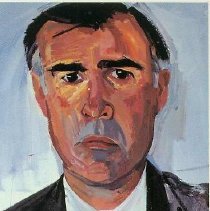
There are very few individuals who are what might be called a “shoe-in” for an Oral History Center life history interview. Governor Jerry Brown is one who easily qualifies. Brown’s career as an elected official began in Southern California in 1969 when he was elected to the Los Angeles Community College Board of Trustees and then continued for nearly the next fifty years through a succession of high offices; in 2018 he concluded his record fourth term as governor.
In forty hours of interviews, there are at least three main areas of study of the life of Jerry Brown, and politics much more broadly, that might be impacted by the contents of this interview from today’s vantage point: the historical trajectory of key social and political issues; the influence of creative and unique ideas upon Brown and his agenda; and what might be called the philosophy of realpolitik — of how politics really works, at least according to Brown.
The Jerry Brown oral history was made possible by funding from the State Government Oral History Program, A Project of the California Secretary of State, State Archives.
Dive Deeper
Dive deeper into the political life of Jerry Brown through the Jerry Brown oral history.
“20 Shades of Jerry Brown” UC Berkeley Podcast
“We had 20 interview sessions, and I would say that in those 20 interview sessions, we had 20 different shades of Jerry Brown,” explains Oral History Center Director Martin Meeker in UC Berkeley’s 9-minute Fiat Vox podcast, “Berkeley oral history project reveals 20 shades of Jerry Brown.” Get a taste of the oral history — hear Brown talk about the medfly invasion, Linda Ronstadt, and politics past and present. Martin Meeker provides insights into this “extraordinarily detailed, thoughtful, self-critical, broad, and sweeping oral history.”
Jerry Brown Interview History
For the historians at UC Berkeley’s Oral History Center, the question was not, “Should this interview be done?” but rather, “How might it be done at all?” Get the inside story about the making of this riveting 40-hour oral history from interviewer and Oral History Center Director Martin Meeker.
Governor Gray Davis Foreword to the Jerry Brown Oral History
When Gray Davis tried to have a hole in the governor’s rug repaired, Jerry Brown responded, “That hole will save the state at least $500 million, because legislators cannot come down and pound on my desk demanding lots of money for their pet programs while looking at a hole in my rug!” Find out why Gray Davis, the 37th Governor of the State of California, who served as chief of staff to Jerry Brown during his first two terms as governor (1975-1981), thinks Jerry Brown is one of the most consequential governors in California history.
California State Government Oral History Program
The Jerry Brown oral history is a part of the State Government Oral History Program and is the cornerstone of the re-launch of the program under California Secretary of State Alex Padilla. All of the oral history materials (recordings and transcripts) will be deposited with the California State Archives and available to users through their website as well.
Jerry Brown Oral History Transcript
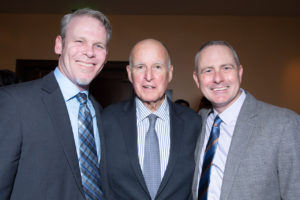
Read the transcript of the 40-hour oral history. In this oral history, the following topics are discussed at length: family background and upbringing; education, religion, and friendships; the political career of Pat Brown; college, seminary, and law school; California statewide elected offices, including Governor of California; campaigns for elected office, including for US President; election reform; taxation, budgets, and deficits; law, the courts, and criminal justice reform; immigration; the environment and climate change; education reform, charter schools, and higher education; Oakland, CA; popular culture, journalism, and political campaigns; political philosophy, theories of governance, and applied politics.
KQED Forum Podcast Featuring OHC Director Martin Meeker
Politics was the family business. The Democratic party was tribal for Brown. Listen as Oral History Center Director Martin Meeker, and KQED interview partners Scott Shafer and Guy Marzorati, talk about the unique political perspective and interviewing style of Jerry Brown.

KQED Podcast: The Political Mind of Jerry Brown
From KQED: The Political Mind of Jerry Brown brings listeners the wisdom of the former Governor, Mayor, and presidential candidate. The Oral History Center’s Martin Meeker and Todd Holmes, and KQED’s Scott Shafer, interviewed Brown for more than 40 hours, covering the former governor’s life and half-century in the political game – and Brown has some lessons he’d like to share. Premiering January 8 with hour-long episodes on KQED 88.5 FM every Wednesday at 8pm through January 29.
Find this interview and all our oral histories from the search feature on our home page. You can search by name, key word, and several other criteria.
Bancroft Roundtable: Thursday, February 20 at noon in the Lewis-Latimer Room of The Faculty Club (This event has passed.)
Brown, Behind the Scenes: Contending with Governor Jerry Brown and His Oral History
In this presentation, OHC historians Martin Meeker and Todd Holmes will provide the behind-the-scenes story of a remarkable interview with a singular Californian and offer an initial perspective on how this oral history might influence our understanding of California and its political culture.
2019 IgNobel Prize Winners Announced A While Ago
Hello,
Once again, we have the IgNobel prizes. Here’s a list of the 2019 winners; links to the actual, real research papers are here.
MEDICINE PRIZE [ITALY, THE NETHERLANDS]
Silvano Gallus, for collecting evidence that pizza might protect against illness and death, if the pizza is made and eaten in Italy.
MEDICAL EDUCATION PRIZE [USA]
Karen Pryor and Theresa McKeon, for using a simple animal-training technique— called “clicker training” —to train surgeons to perform orthopedic surgery.
BIOLOGY PRIZE [SINGAPORE, CHINA, GERMANY, AUSTRALIA, POLAND, USA, BULGARIA]
Ling-Jun Kong, Herbert Crepaz, Agnieszka Górecka, Aleksandra Urbanek, Rainer Dumke, and Tomasz Paterek, for discovering that dead magnetized cockroaches behave differently than living magnetized cockroaches.
ANATOMY PRIZE [FRANCE]
Roger Mieusset and Bourras Bengoudifa, for measuring scrotal temperature asymmetry in naked and clothed postmen in France.
CHEMISTRY PRIZE [JAPAN]
Shigeru Watanabe, Mineko Ohnishi, Kaori Imai, Eiji Kawano, and Seiji Igarashi, for estimating the total saliva volume produced per day by a typical five-year-old child
ENGINEERING PRIZE [IRAN]
Iman Farahbakhsh, for inventing a diaper-changing machine for use on human infants.
ECONOMICS PRIZE [TURKEY, THE NETHERLANDS, GERMANY]
Habip Gedik, Timothy A. Voss, and Andreas Voss, for testing which country’s paper money is best at transmitting dangerous bacteria.
PEACE PRIZE [UK, SAUDI ARABIA, SINGAPORE, USA]
Ghada A. bin Saif, Alexandru Papoiu, Liliana Banari, Francis McGlone, Shawn G. Kwatra, Yiong-Huak Chan, and Gil Yosipovitch, for trying to measure the pleasurability of scratching an itch.
PSYCHOLOGY PRIZE [GERMANY]
Fritz Strack, for discovering that holding a pen in one’s mouth makes one smile, which makes one happier — and for then discovering that it does not.
PHYSICS PRIZE [USA, TAIWAN, AUSTRALIA, NEW ZEALAND, SWEDEN, UK]
Patricia Yang, Alexander Lee, Miles Chan, Alynn Martin, Ashley Edwards, Scott Carver, and David Hu, for studying how, and why, wombats make cube-shaped poo.
Frederic E. Wakeman, Jr., Historian of Late Imperial and Modern China, University of California, Berkeley, 1965-2006
Ann Lage
November 2019
Oral History Center
The Oral History Center is pleased to announce the launch of the oral history with noted China historian, Frederic Wakeman. Conducted over eleven interview sessions in the two years before his death in 2006, the oral history is part of an ongoing series of interviews with scholars in UC Berkeley’s Department of History.
Fred Wakeman spent his academic career at Berkeley, commencing with graduate studies here in far eastern history under the guidance of Professor Joseph Levenson. Immediately after completing his PhD in 1965, he was appointed assistant professor of history, and he served in the department for forty-one years, until his retirement in 2006. But despite his fealty to this place, he was very much a citizen of the world throughout his life, as he recounts in his oral history. He vividly describes his peripatetic childhood .as the son of a novelist and screenwriter living in Bermuda, Mexico, Cuba, Spain, France, and the US Midwest, Northeast, and South, and rubbing shoulders with the likes of Ernest Hemingway, Gene Tunney, a racketeer godfather, and purported spies and con men. As a youth, he mastered several languages, read widely, made himself at ease in many cultures, and developed the fascination with the world of intrigue that suffused much of his scholarly work. He studied European history and literature as an undergraduate at Harvard and Soviet studies and political theory at the Institut d’etudes politiques in Paris. He then wrote a novel and flirted with the idea of joining the CIA, before settling on pursuing a graduate degree in China studies at Berkeley.
Over his four-decade career, Wakeman wrote groundbreaking histories of late imperial and modern China, meticulously researched, deeply analytical, and written with the graceful narrative style of a master novelist. Strangers at the Gate, his doctoral dissertation, engaged in local history, a new departure in China studies. With History and Will, he examined Mao’s intellectual roots in European and Chinese thinkers. Delving into newly discovered historical archives in China, he pursued his monumental work, twenty years in the making, on the Ming-Qing transition, the two-volume narrative history, The Great Enterprise: the Manchu Reconstruction of the Imperial Order in 17th Century China. Discovery of an incredible source of social and police history in the archives of the Shanghai Municipal Police led to his trilogy of books, Policing Shanghai, Shanghai Badlands, and Red Star over Shanghai. In 2003, he published his fourth book focusing on Shanghai and reflecting his interest in espionage, Spymaster: Dai Li and the Chinese Secret Service.
On campus Wakeman chaired the Center for Chinese Studies from 1973-1979 and was director of the Institute of East Asian Studies from 1990-2001. He was instrumental in opening scholarly exchanges between the US and China in the 1970s. His oral history describes the excitement of meeting Chinese historians in 1979 and the transformation that ensued in the study of Ming-Qing history when the first group of American scholars was led to the secret and unimaginably vast archive of government documents on the Ming-Qing era:
It was again one of those occasions where people who we thought were dead or had disappeared, or whatever, suddenly were saying, “I’m Xie Guozhen.” My God! Or, you know, “I’m Wang Qingcheng,” or “I’m . . . Zhaang Zhongli.” You know, very famous people. . . . it was absolutely thrilling. we were all completely atingle with excitement. And the second day there, the person who was assigned to be our, the Chinese call peitong, the person who accompanies you, who was a very, very vigorous, strong intellectual who had made his way through the Cultural Revolution, without—he had been labeled a Number Nine Stinking Intellectual; he’d survived that, and he was a wonderful man who’d been a secretary of Guo Moro, the great Chinese poet and writer and historian. He told me, in confidence, he said, because I was the head of the delegation, he said, “We’re going to take you to see the Ming-Qing archives. I said, “Really!” I was so excited. . . we didn’t know these things had been preserved . . .
Hidden in a compound on the grounds of the Forbidden City,:they are led into vaults, “You go into these vaults and it’s, ‘My God!’ and it began to dawn upon us. This was—we had our work cut out for us!”
As he notes in the oral history, the study of modern Chinese history was forever altered by the ensuing research in these documents. Wakeman’s The Great Enterprise was based largely on this Forbidden City archive.
In response to our project’s interest in the history of the Department of History, Wakeman reflected on the department’s all-male cohort hired at Berkeley in the late fifties and early sixties, a variegated group with tolerance for different historical approaches and insistence on rigorous standards for promotion to tenure. He contrasts the camaraderie of this group with the department’s gender and cultural battles in the early and mid-1980s, resulting in sometimes bitter personnel fights. His oral history also traces hiring in the China area, which made the Berkeley department a major US site for training historians of China.
Wakeman vividly describes campus protests of the Vietnam war era and the effect of campus political battles on the history department and the Center for Chinese Studies.
Our final interview took place in April 2006. Fred Wakeman retired in June and was awarded the Berkeley citation, the university’s highest honor. He and his wife, He La Wakeman, moved to their home in Lake Oswego, Oregon. Within just a few months, Fred died of cancer, on September 14, 2006, at age 68. We are grateful to have these recollections of his remarkable career. Fred Wakeman’s research, writing, and teaching, coupled with his public service on the campus and as chair of the Social Science Research Council and committees to expand scholarly exchanges, had a major impact on China studies at Berkeley, in the US, and internationally.
Newly Acquired Public Health Books
Here is a sample of new Public Health books — many more may be found on our New Public Health Books web guide. Click the links below for library location. And, happy reading!
Community-based participatory research for health: advancing social and health equity
Transgender and gender nonconforming health and aging
Mapping AIDS : visual histories of an enduring epidemic
Mama might be better off dead: the failure of health care in urban America
Climate change and the people’s health
Global Indigenous Health: Reconciling the Past, Engaging the Present, Animating the Future
Mobile communications and public health
Pregnancy and power: a history of reproductive politics in the United States
The gendered landscape of suicide: masculinities, emotions, and cultures
Research Round-Up

Staff in the Social Sciences Division conduct professional research as a way to contribute to the library profession and as a way to engage with library peers beyond Berkeley. Here is a round-up of some recent research output (articles, presentations, etc.) by our colleagues in the division.
Church, James and Josh Quan. 2018. “Patron Driven Data Acquisitions: Prizes, Perils, and Pitfalls.” Federal Reserve Bank of St. Louis. This presentation at the Federal Reserve Bank of St. Louis conference, “Beyond the Numbers: The Economic Data Ecosystem,” chronicles the successes, failures, and lessons learned from a patron driven data acquisitions program piloted by UC Berkeley Library.
Church, James, Susan Paterson, Amanda Wakaruk, and James R. Jacobs. 2018. “Endangered Government Information: Strategies to Protect Government Collections.” New Orleans, LA: American Library Association. This presentation at the American Library Association Annual Conference in New Orleans discussed methods and strategies on how to protect endangered government information in Canada and the United States.
Edwards, Susan, Chan Li, Celia Emmelhainz, Adam Clemons, Liladhar Pendse, and Natalia Estrada. 2018. “Collecting Globally, Connecting Locally: 21st Century Libraries.” P. 700 in Library Assessment Conference: Building Effective, Sustainable, Practical Assessment. Houston, TX. Presented at the ARL Library Assessment Conference, Houston, this research project used mixed methods to explore faculty beliefs about, and scholarly usage of, non-U.S./U.K. and non English language sources focusing on four departments with global research focus — Anthropology, History, Political Science and Sociology.
Emmelhainz, Celia and Marilyn R. Pukkila. 2018. “Being There at a Distance: Connecting the Academic Library to Students Who Study Abroad.” College & Research Libraries News 79(7):376. After meeting with study abroad students in orientation then surveying them after their programs, librarians found that while outreach results in limited additional usage of library resources, it significantly increases student awareness of library resources and feelings of being supported while conducting research on the other side of the world.
Glusker, Ann. 2019. “Collaboration and Innovation: NNLM’s Nationwide Online Wikipedia Edit-a-Thon.” This talk at the Online Northwest conference on libraries, technology, and culture, reports on the National Network of Libraries of Medicine’s (NNLM) ongoing Wikipedia edit-a-thon program, how the the unusual format worked, and tips for hosting an online edit-a-thon.
Glusker, Ann and Nina Exner. 2018. “Responding to Change: Reinventing Librarian Identities in the Age of Research Mandates.” Emerald Publishing Limited. This chapter outlines libraries’ (and librarians’) changing identities in the new world of research mandates from funders, institutions, and publishers.
Phillips, Margaret. 2019. “Readers and Authors of Educational Research: A Study of Research Output on K-12 Education Policy.” SAGE Open 9(2). Focusing on journal articles and reports in the field of education, this study examined the public availability of the publications, publication quality as determined by peer review, and authorship.
Schiraldi, Hilary. 2019. “Stepping Up Library Communications at UC Berkeley.” This poster, presented at the Academic Business Library Director’s Annual Meeting, describes the new Communications Department in the UC Berkeley Library and how it pulled together multiple library communications channels under one unit.
Singh, Monica and Celia Emmelhainz. 2019. “Listening to Unaffiliated Users of the Academic Library.” SAGE Open 9(2). In this study the authors interviewed 10 unaffiliated library users to better understand their perceptions of a large academic library and how the library fits into their daily habits.
New Resource for Digital Scholarship: Gale Digital Scholar Lab
Interested in computational text analysis, but don’t have coding experience? Or perhaps you’ve already written your own Python scripts, but you’re on the lookout for sources to build your text corpus. The Gale Digital Scholar Lab, new to the Library, offers solutions for digital humanities and digital scholarship researchers regardless of your level of technical expertise.
Create Visualizations and Run Computational Analyses in Your Web Browser
The Gale Digital Scholar Lab offers six analysis tools through which you can analyze Gale materials with just a few clicks:
- “Clustering” analyzes similar words across documents.
- “Named entity recognition” extracts proper and common nouns and groups them by types such as people, organizations, or dates.
- “Ngram” looks at the frequency of various terms or phrases.
- “Parts of speech tagger” considers how authors’ use of speech varies over time.
- “Sentiment analysis” tallies the positive or negative words in each document to produce a sentiment value.
- “Topic modeling” collects terms that frequently co-occur across a group of documents.
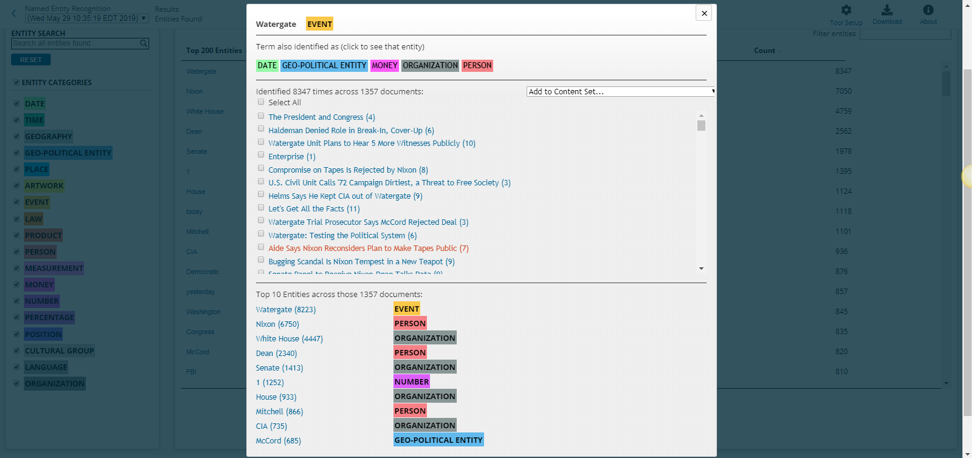
Download Plain-Text Files to Run Your Own Analyses
You can download up to 1000 documents at a time as plain-text files for your personal use. You can run your own analyses on this data and combine it with other text sources to build custom text corpora.
What Content Is Available?
The Gale Digital Scholar Lab includes 160 million pages of Gale Primary Sources content from the following primary source digital archives:
17th and 18th Century Burney Collection
American Civil Liberties Union Papers, 1912-1990
American Fiction
Archives Unbound
Archives of Sexuality & Gender
British Library Newspapers
The Economist Historical Archive
Eighteenth Century Collections Online
Indigenous Peoples: North America
The Making of Modern Law: Foreign Primary Sources
The Making of Modern Law: Foreign, Comparative, and International Law, 1600-1926
The Making of Modern Law: Legal Treatises, 1800-1926
The Making of Modern Law: Primary Sources
The Making of Modern Law: Trials, 1600-1926
The Making of the Modern World
Nineteenth Century Collections Online
Nineteenth Century U.S. Newspapers
Sabin Americana, 1500-1926
The Sunday Times Digital Archive
The Times Digital Archive
The Times Literary Supplement Historical Archive
U.S. Declassified Documents Online
Additional Features
- View scans of original documents side-by-side with OCR plain text
- Work iteratively with your content set to refine your results
- Easily clean your data right in the Gale Digital Scholar Lab interface and create custom text-cleaning templates
- Work with materials and tools in other languages
How to Get Started
- Visit the Gale Digital Scholar Lab
- Log in with your Google or Microsoft OneDrive credentials (a personal account is needed so you can create and save personalized datasets)
- Create your dataset by searching through the materials in the Lab.
- Run analyses on your dataset right in the web browser and get immediate results, or download your dataset to your computer to run your own scripts.
Getting Your Bearings Library Tours
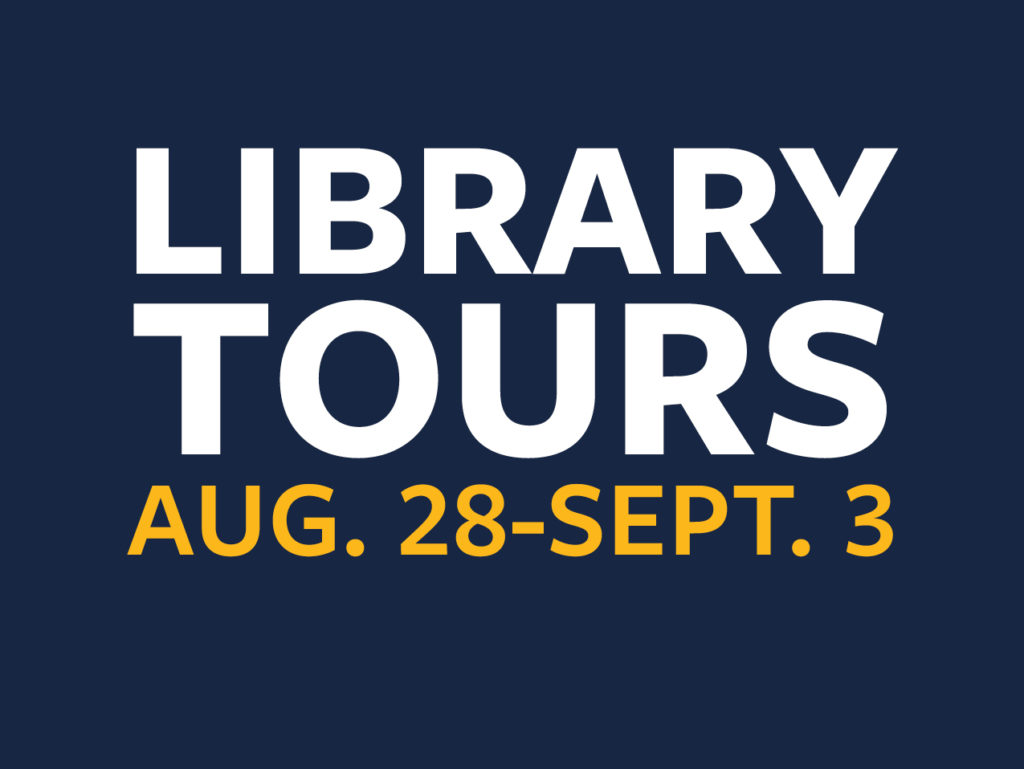
Join other students and get your bearings with a 3-in-one tour of the Doe Memorial Library, Moffitt Undergraduate Library, and the Main Stacks. See these central libraries and learn about the student services they provide.
When: Aug. 28-Sept. 3, 2019 every day (with exceptions) from 11 a.m.-12 p.m. and 2-3 p.m.
Where: Doe Library; tour starts at the north entrance
The Legacy of Toni Morrison
Toni Morrison, Nobel Laureate and giant of American letters, passed away yesterday, and her words will always be with us. Find her books at the Berkeley Libraries as well as scholarship on her oeuvre.
What books of Toni Morrison’s made an impression on you? Tell us on Twitter.
